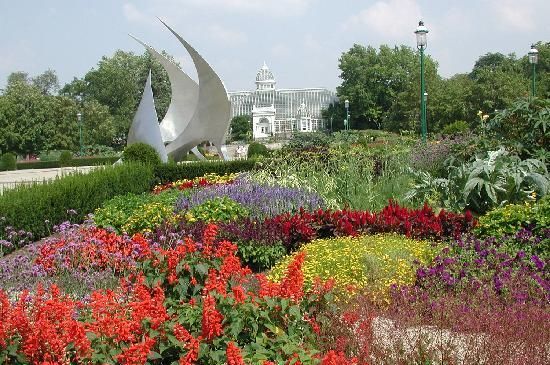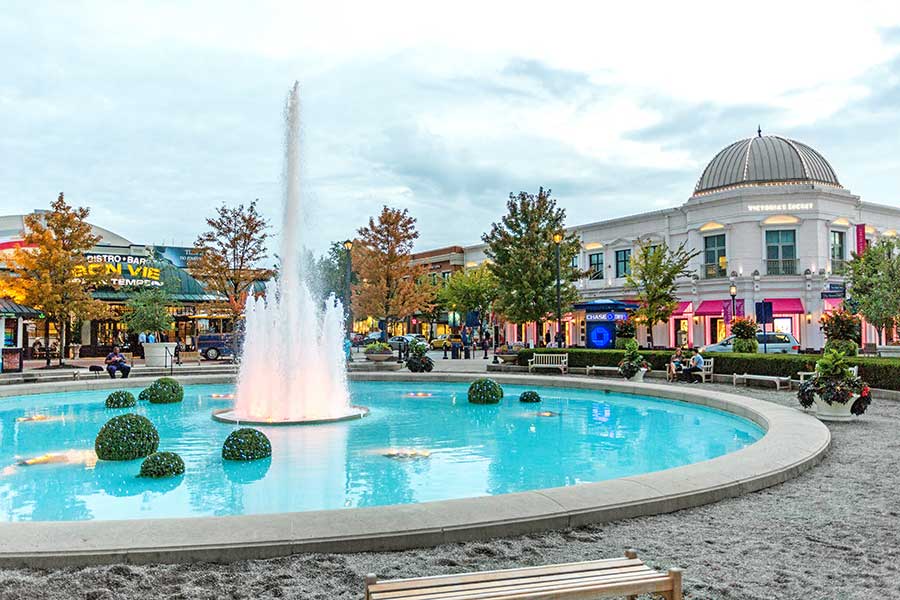222 Capitol Street, Suite 522
Charleston, WV 25301

History Of Columbus, Ohio
Columbus was planned in 1812 as a political centre by the Ohio legislature and was named for Christopher Columbus. The state government moved to the city in 1816 from Chillicothe, and Columbus later absorbed the nearby earlier settlement of Franklinton (founded 1797). The city experienced significant growth after a feeder branch of the Ohio and Erie Canal was opened to it in 1831 and the Cumberland (National) Road from Maryland reached it in 1836. The first railroad arrived in 1850, further stimulating development.
During the American Civil War, Columbus became a major staging area for Union forces, and Camp Chase, one of the North’s largest facilities for Confederate prisoners of war, was built on the city’s west side. The local economy continued to boom after the war. Columbus became one of the country’s major manufacturers of horse-drawn vehicles. By 1900, when the population exceeded 125,000, the city had emerged as an important transportation and commercial centre. Following damaging floods in 1913, the Scioto River was widened and levees, retaining walls, and
bridges constructed, which allowed riverfront development.
Landmarks

Franklin Park Conservatory and Botanical Gardens
Write your caption hereButton
Easton Town Center
Write your caption hereButton
Center of Science and Industry (COSI)
Write your caption hereButton
Timeline of Columbus, Ohio
19th century
- 1812
- Columbus founded.[1]
- Population: 300.[1]
- 1816
- Columbus becomes the capitol of Ohio.
- Jarvis W. Pike elected mayor.[1]
- 1817 – Ohio State Library headquartered in Columbus.[2]
- 1832 – Ohio School for the Deaf established.
- 1831 – Columbus connected to Ohio and Erie Canal.[1]
- 1833 – National Road in operation.[1]
- 1834
- Columbus chartered as a city.
- John Brooks becomes mayor.
- Ohio Penitentiary begins operating.[1]
- 1837 – Ohio State School for the Blind established.[1]
- 1840 – Population: 6,048.[3]
- 1845 – Columbus Public Schools established.
- 1849
- State Convention of the Colored Citizen held in city.[4]
- Green Lawn Cemetery established
- 1850
- Columbus and Xenia Railroad begins operating.[1]
- Population: 17,882.[3]
- 1851 – Cleveland, Columbus and Cincinnati Railroad begins operating.
- 1853 – Columbus Athenaeum founded.[2]
- 1861 – Ohio State Capitol building completed.[1]
- 1862 – Fort Hayes established.
- 1868
- St. Mary’s of the Springs school opens.[1]
- Cleveland, Columbus, Cincinnati and Indianapolis Railway in operation.
- 1870
- The Ohio State University founded
- Columbus Circulating Library organized.[2]
- 1871 – Daily Dispatch newspaper begins publication.[5]
- 1872 – Public Library & Reading Room established.[2][6]
- 1873 – Ohio Agricultural and Mechanical College opens.[1]
- 1875 – Union Station rebuilt.
- 1878 – Columbus Gallery of Fine Arts and Ohio State University Marching Band established.
- 1879 – Columbus Art School and Camp Chase Confederate Cemetery[1] established.
- 1880 – Population: 51,647.[3]
- 1887 – Franklin County Courthouse built.[1]
- 1894 – “Ugly law” approved.[7]
- 1895 – Franklin Park Conservatory opens.
- 1898 – First Neighborhood Guild organized.[8]
- 1899
- Columbus Citizen newspaper begins publication.[5]
- Masonic meeting hall built.
- 1900
- Godman Guild House built.[8]
- Population: 125,560.[3]
20th century
- 1904 – Governor’s Mansion and Franklin County Memorial Hall[1] built.
- 1905 – Indianola Park (amusement park) in business.
- 1906 – Columbus Public Library building constructed.[1]
- 1910 – Streetcar strike.[1]
- 1913 – Flood.[1]
- 1912 – Woman Suffrage Parade.
- 1919 – Spring Street YMCA opens.[9]
- 1920 – Population: 237,031.[3]
- 1922 – Ohio State University’s Ohio Stadium built.[1]
- 1927 – American Insurance Union Citadel completed, becoming the fifth largest building in the world at the time.
- 1929 – Battelle Memorial Institute founded.
- 1933 – Ohio State Office Building constructed.[1]
- 1934 – U.S. Post Office and Courthouse built.[1]
- 1936 – White Castle (restaurant) headquartered in city.
- 1940 – Population: 306,087.[3]
- 1947 – National Auto Theatre (drive-in cinema) in business.[10]
- 1952 – Ohio State University’s Mershon Center for International Security Studies established.
- 1954 – Black Baptist Pastors’ Conference organized (approximate date).[11]
- 1955 – Sister city relationship established with Genoa, Italy.[12]
- 1959 – The Columbus Citizen-Journal newspaper in publication.
- 1960 – Population: 471,316.[3]
- 1964
- Northland Mall in business.
- Bank One Tower built.
- 1969 – First Wendy’s founded by Dave Thomas.
- 1970
- Columbus Free Press begins publication.
- Columbus surpasses Cincinnati in population.
- 1974 – Rhodes State Office Tower built.
- 1975 – Columbus Monthly magazine begins publication.
- 1976
- Fort Hayes Metropolitan Education Center established.
- Union Station demolished.
- 1977
- QUBE television begins broadcasting.
- One Nationwide Plaza built.
- Clippers begin playing in Columbus.
- 1978 – Community Development Task Force formed.[13]
- 1980 – Sister city relationship established with Tainan City, Taiwan.[12]
- 1982 – Columbus surpasses Cleveland to become the largest city by population in Ohio.
- 1984
- Huntington Center built.
- Ohio Penitentiary closes.
- 1985 – Catco theatre company founded.
- 1987
- King Arts Complex active.
- Union Station (Mural) painted.
- 1988
- Vern Riffe State Office Tower and Three Nationwide Plaza built.
- Sister city relationships established with Hefei, China; Odense, Denmark; and Seville, Spain.[12]
- 1989 – Columbus City Center (shopping mall) in business.
- 1990
- The Other Paper begins publication.
- William Green Building constructed.
- Population: 632,910.[3]
- 1991
- City government computer network begins operating.[14]
- Carriage Place Movies 12 (cinema) in business.[10]
- 1992 – Sister city relationship established with Dresden, Germany.[12]
- 1996
- Columbus Crew begins play with the newly established Major League Soccer.
- Sister city relationship established with Herzliya, Israel.[12]
- Chamber of Commerce city portal online.[15][16]
- 1998 – City government website online (approximate date).[17][chronology citation needed]
- 1999 – Columbus Crew move to newly built Columbus Crew Stadium, now known as Mapfre Stadium.
- 2000
- Michael B. Coleman is first elected as mayor.
- Nationwide Arena opens, hosting the newly founded Columbus Blue Jackets.
- Population: 711,470.[18]
21st century
- 2001
- Columbus Underground begins publication.[19]
- Miranova Condominiums built.
- Arena Grand cinema[10] and Polaris Fashion Place (shopping mall) in business.
- 2004 – The Northland Mall on Morse Road, which closed in 2002, is demolished to make way for a new commercial development,[20] ultimately to be called Northland Village.
- 2008 – Sister city relationship established with Ahmedabad, India.[12]
- 2009 – Huntington Park opens in the Arena District, replacing Cooper Stadium as the home of Columbus Clippers baseball.
- 2009 – 614 Magazine began
- 2010
- Population: 787,033.[21]
- Columbus City Center demolished.
- 2011
- Columbus Commons (park) opens.
- Steve Stivers becomes U.S. representative for Ohio’s 15th congressional district.[22]
- 2013
- Population: 822,553.[23]
- Joyce Beatty becomes U.S. representative for Ohio’s 3rd congressional district.
- 2014 – Sister city relationship established with Curitiba, Brazil.[12]
- 2016 – Columbus surpasses Indianapolis to become the second largest city in the Midwest.
- 2018 – Columbus surpasses San Francisco to become the 14th largest city in America.
- 2020 – COVID-19 pandemic, George Floyd protests and riots
The city was first laid out in 1812 and incorporated in 1816. Columbus was not the original capital, but the state legislature chose to move the state government there after short periods in both Chillicothe and Zanesville.
The history of Columbus goes back before the establishment of Franklinton, the village that Lucas Sullivant built on the west side of the Scioto River, even before there were any settlers in the area, even before the Native Americans that were using the land when the first white explorers passed through. Before these people there is evidence that there was a large group of people that lived throughout the Scioto Valley area as far back as 3,000 years ago. These people lived in large communities with many smaller communities. The reason we know this is that they left fortifications made of mounds of dirt.
A video presentation of the History of Columbus, Ohio

Main Office
222 Capitol Street, Suite 522
Charleston, WV 25301
other offices
48 1/2 Second Ave, Williamson, WV 25661
20 Clinch Mountain Ave, Lebanon, VA 24266,
Contact
DIGITAL MARKETING SERVICES
All Rights Reserved | Ideation Digital
Private Policy
All Rights Reserved | Ideation Digital

